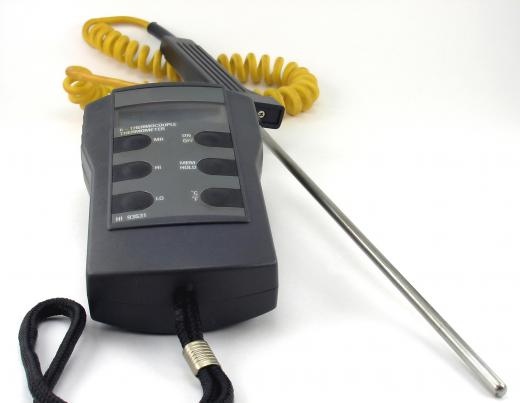A cartridge heater is a thin, tube shaped heating device used to internally heat machine and process components such as platens, dies and molds, and sealing bars. The heater consists of a hollow metal tube with a wound resistive heater element embedded in an insulating compound inside it. A thermocouple or controller supplies power to the heater element via a set of leads which exit at one end of the tube. The cartridge heater is inserted into a close fitting hole in the material and, once activated, heats it from within. Cartridge heaters are available as swagged or non-swagged and in a variety of sizes and power ratings.
Machines or process parts such as embossing platens, thermoplastic molds, and extrusion dies require heating to operate correctly and, in most cases, are best heated internally. Cartridge heaters are devices commonly used to achieve this internal heating and are incorporated directly into the body of the relevant part. The cartridge heater consists of a thermally conductive metal tube, hollow at its center, and capped at one end. An electrical resistance heater element is wound around an insulating core, typically a ceramic compound, and placed into the metal tube. The space between the heater element and tube is then filled with powder such as magnesium oxide which insulates the element electrically but conducts heat well.

This device may then be swagged or left as-is. Swagging involves compressing the metal tube to constrict it against the powdered thermal conductor ensuring maximum heat transfer potential. Although beneficial to a point, swagging is expensive and many low cost cartridge heaters are left non-swagged. The two heater element power supply leads exit at the uncapped end of the tube. These leads may be axial for straight line installations or radial for applications which require 90° lead orientation.
The cartridge heater is installed via a close fitting hole drilled into the heated part body. The tube needs to fit tightly into the hole to ensure maximum heater efficiency and with average manufacturer specifications requiring a 0.010 inch (0.25 mm) difference between tube and hole diameters. The output of the cartridge heater is controlled by a surface mounted thermocouple or a remote microcontroller which maintains the part at an optimal temperature. These heaters are available in a range of sizes from 1/4 inch (6.35 mm) to 1 inch (25.4 mm) in diameter. Cartridge heaters are power rated in “watt density” units based on the diameter, length, and wattage of the heater.
